Returning to Galveston Bay, Texas A&M Oceanographers Continue Studying Post-Harvey Coast
Aggie oceanographers and other collaborative researchers visited Galveston Bay on the R/V Trident to continue studying the effects of Hurricane Harvey on the marine ecosystem.
Apr 11, 2018

On March 24, Dr. Jessica Fitzsimmons, assistant professor in the Department of Oceanography at Texas A&M University, led Aggie oceanographers aboard the R/V Trident for a one-day cruise in Galveston Bay. A range of undergraduate and graduate students from the Department of Oceanography and other collaborative departments were involved in this cruise to study the ocean environment along the Texas coast.
“The main goal of this cruise was to answer the big question – what were the effects of Hurricane Harvey on Galveston Bay?” said Fitzsimmons.
The first cruise in this series of research cruises was in June 2017, led by Dr. Shari Yvon-Lewis who is a professor and also the oceanography department head, as an opportunity for her graduate students and collaborating students to collect and analyze samples. Then, Hurricane Harvey hit Texas a few months later in late August 2017. Since then, Fitzsimmons, Yvon-Lewis, and other research faculty in the Department of Oceanography have gathered high impact learning and research funds to continuously visit their ocean backyard, Galveston Bay, not only to provide access to the ocean to collect samples but also to develop a collaborative research team to explore the coastal ocean’s response to contaminants released during Hurricane Harvey. Two more cruises were completed in September 2017, soon after Harvey, and in November 2017 to assess how the ecosystem in Galveston Bay had recovered from Harvey. The March 2018 outing was the fourth such cruise to visit Galveston Bay, more than half a year after Harvey.
“The March cruise was meant to capture the final time point in the seasonality of Galveston Bay,” said Fitzsimmons. “Now we have a complete dataset over all four seasons, including wet and dry seasons and also immediately following Hurricane Harvey.”
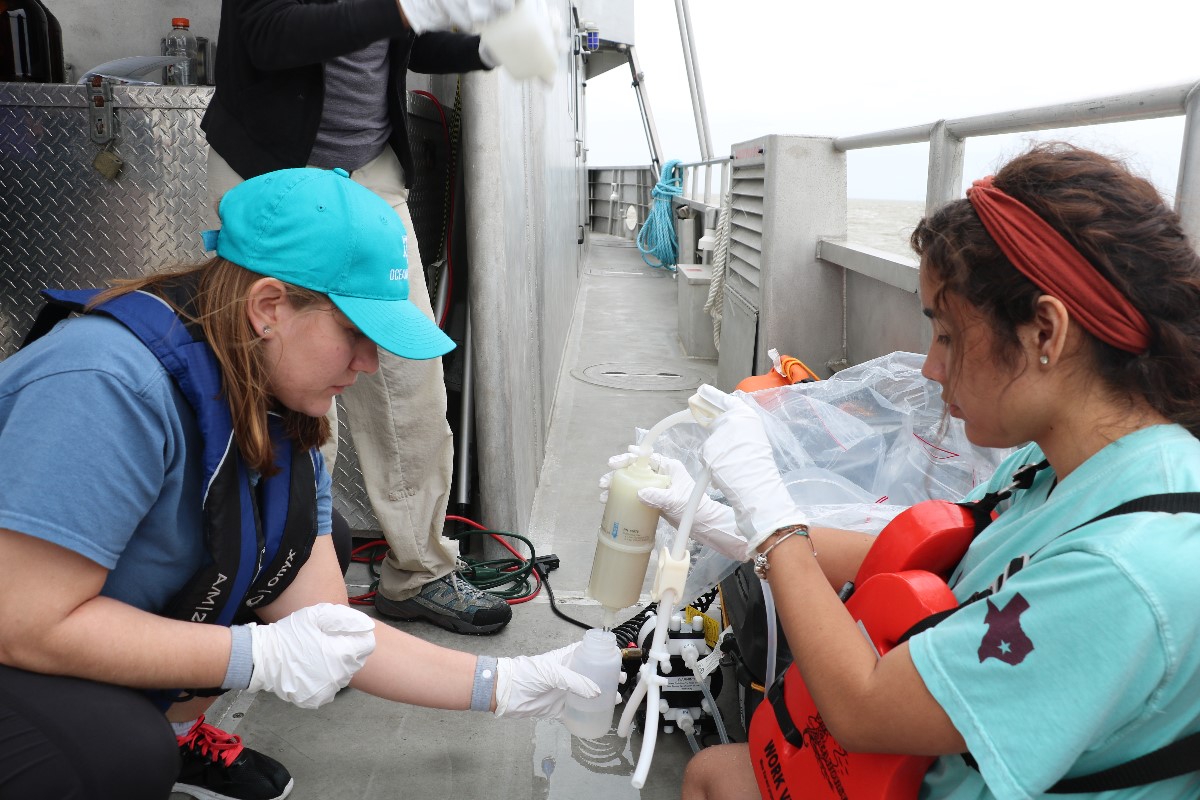
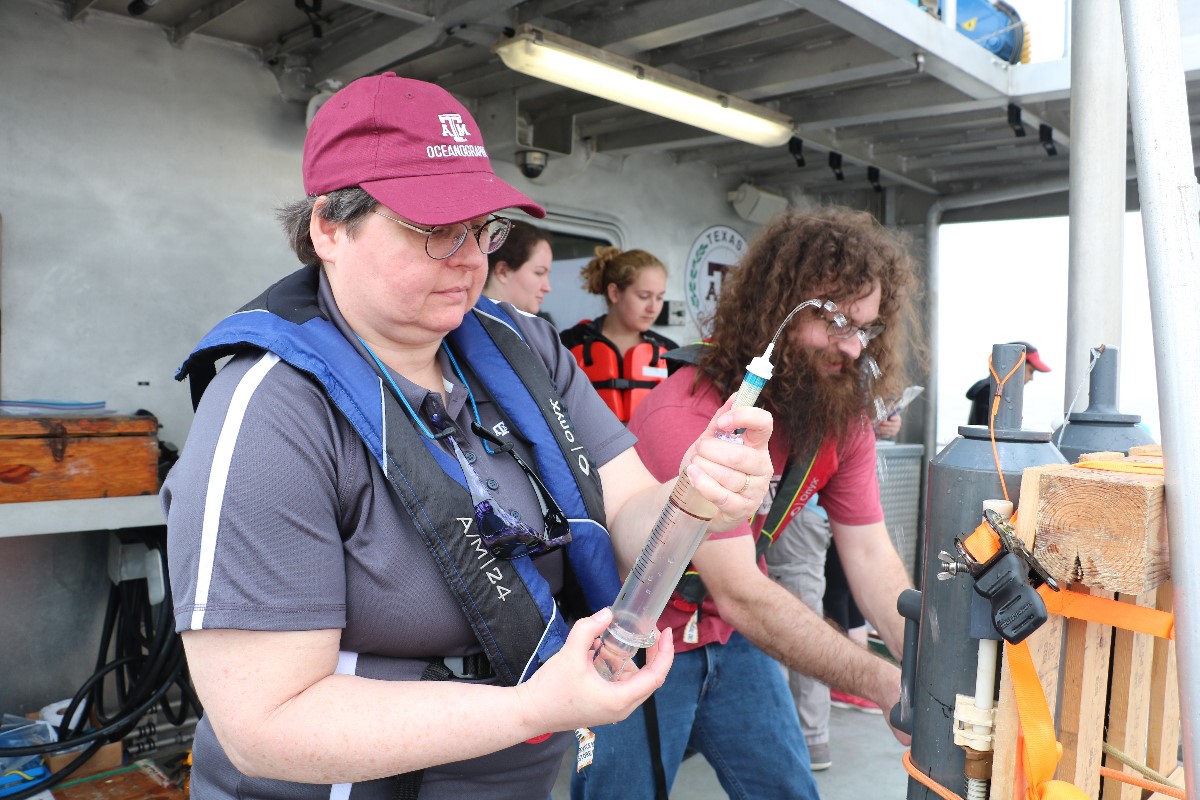
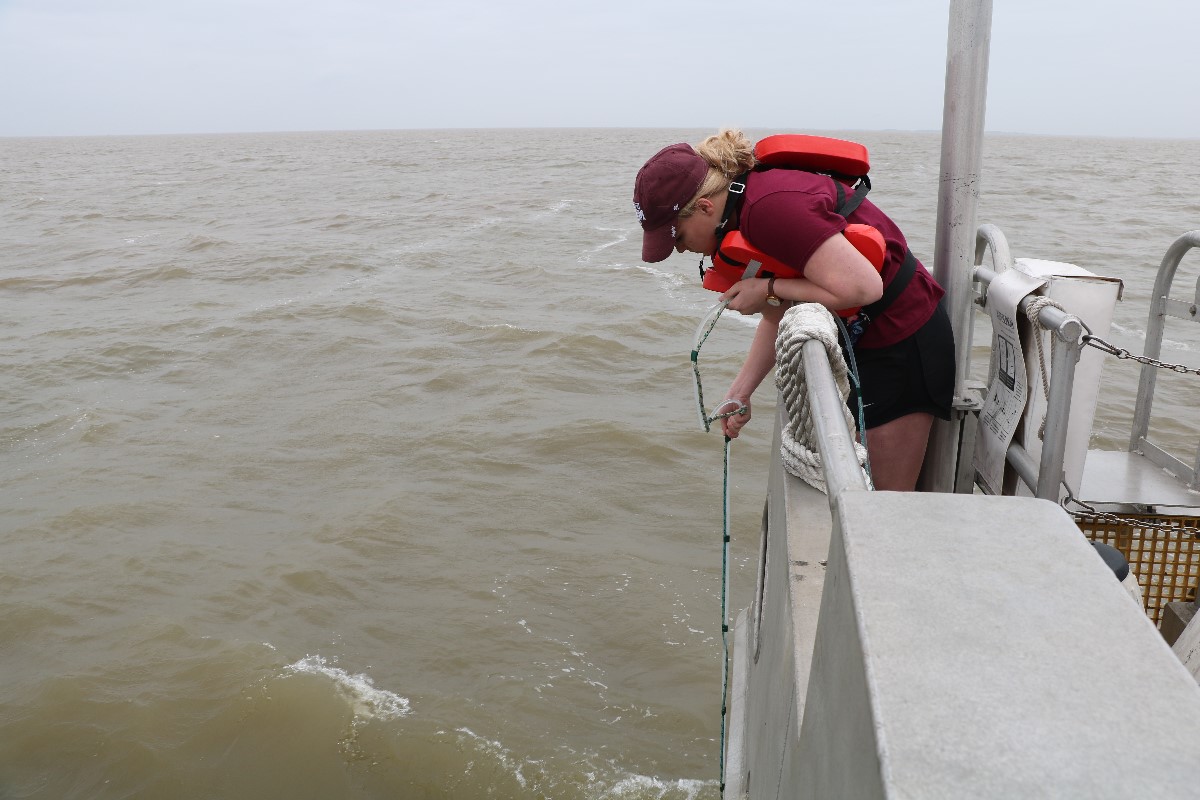

During the cruise, students collected various environmental samples from seawater and the sediments. At each station, a CTD (conductivity, temperature, depth) sensor instrument was deployed to measure temperature, salinity, and depth of the water column, and a Secchi Disk was deployed to measure turbidity. Seawater was sampled from a Niskin bottle to measure various biogeochemical parameters, including dissolved oxygen, inorganic and organic carbon, pH, bacterial and phytoplankton abundances, toxic contaminants and pollutants, etc. Also, samples for trace metals (such as dissolved iron and toxic lead), macronutrients, petroleum oil compounds, and suspended particles were collected using a pump deployed into the seawater, from both the surface and near the seafloor. Sediment samples were collected by manually lowering a grab sampler to measure toxic heavy metals, bacteria, and organic abundances.
A symposium, “Effects of Hurricane Harvey on Galveston Bay,” was held on Jan. 19 by the Department of Oceanography to introduce the cruises’ successful progress and results. The symposium was attended by students, faculty, staff, and local stakeholders including Texas Sea Grant.
“Through this opportunity, like never before, we were able to unite our graduate students and faculty to access the ocean,” Fitzsimmons said. “Throughout the oceanography program and across the College of Geosciences, we are all interested in accessing the ocean. We all have these small ideas that we need access to seawater in order to explore, for example, sampling and analytical methods tests, calibrating and testing oceanography instruments, and designing new experiments. We now have that opportunity in our ocean backyard. We can get our students to gain experience and get trained, at both the undergraduate and graduate levels.”
“It is really exciting. Through this program, we have developed a seasonal snapshot of a small but important, anthropogenically-influenced ocean body, Galveston Bay. We have incredible coverage of a large suite of contaminant and biogeochemical parameters that are coming together into a great story following Hurricane Harvey.”
They are open to any other faculty or researchers interested in collaborating with their interdisciplinary research team, Fitzsimmons said.

Dr. Jessica Fitzsimmons and her students. (Photo by: Bumsoo Kim)
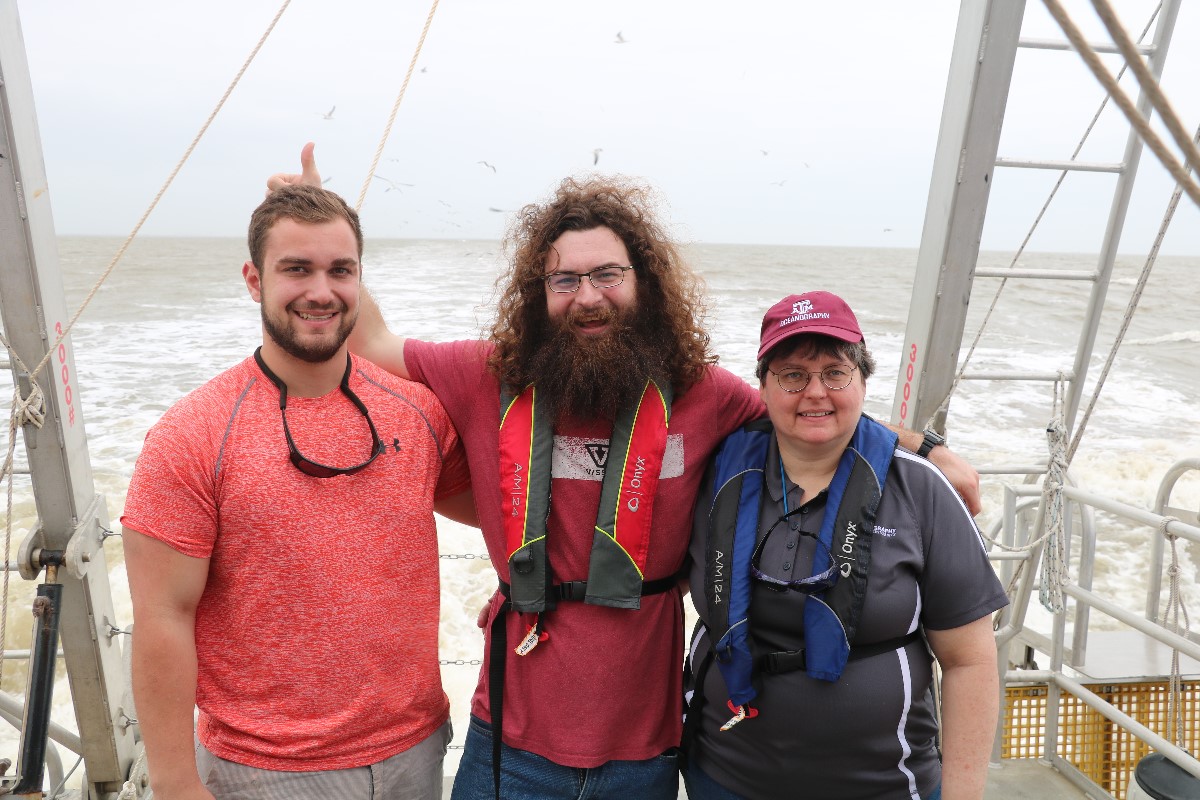
In addition to Yvon-Lewis and Fitzsimmons, these collaborative researchers have supported and were involved in this study: Drs. Kathryn Shamberger, Daniel Thornton, and Gerardo Gold Bouchot in the Department of Oceanography, and Dr. Kung-Hui (Bella) Chu in the Department of Civil Engineering. They are also collaborating with researchers at Texas A&M Galveston, led by Dr. Antonietta Quigg.
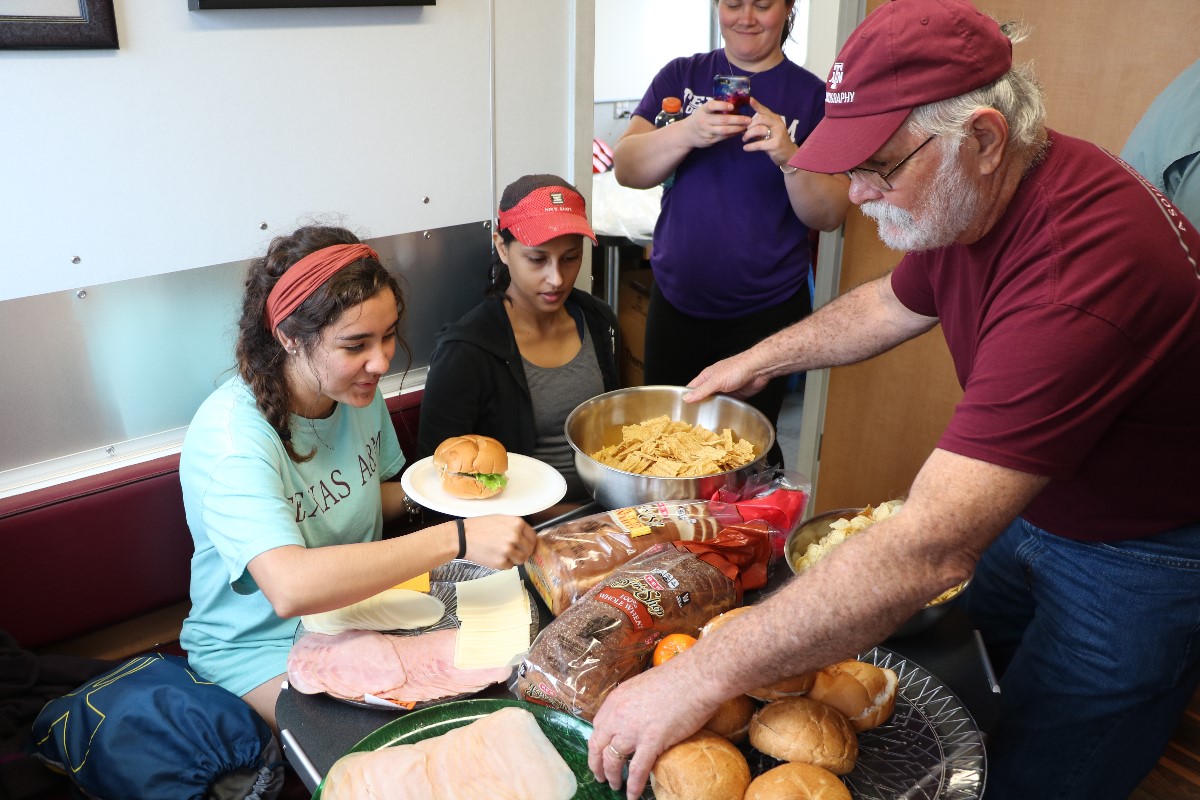
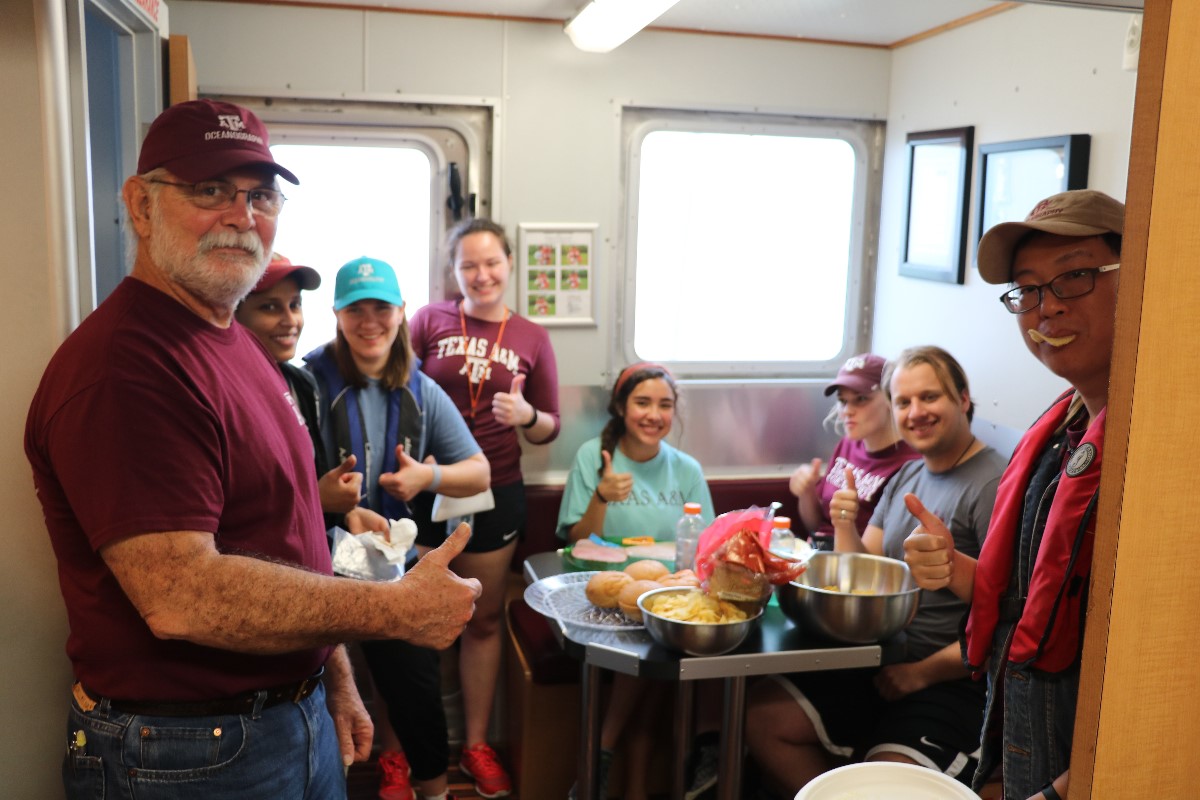
By Bumsoo Kim

